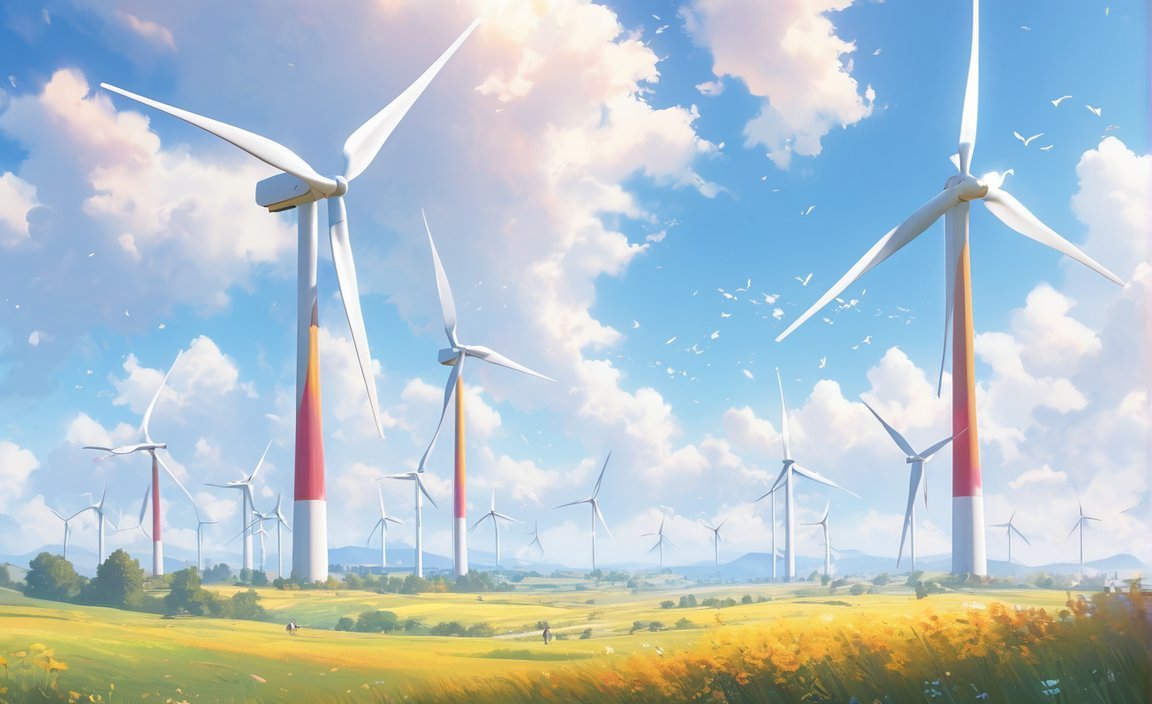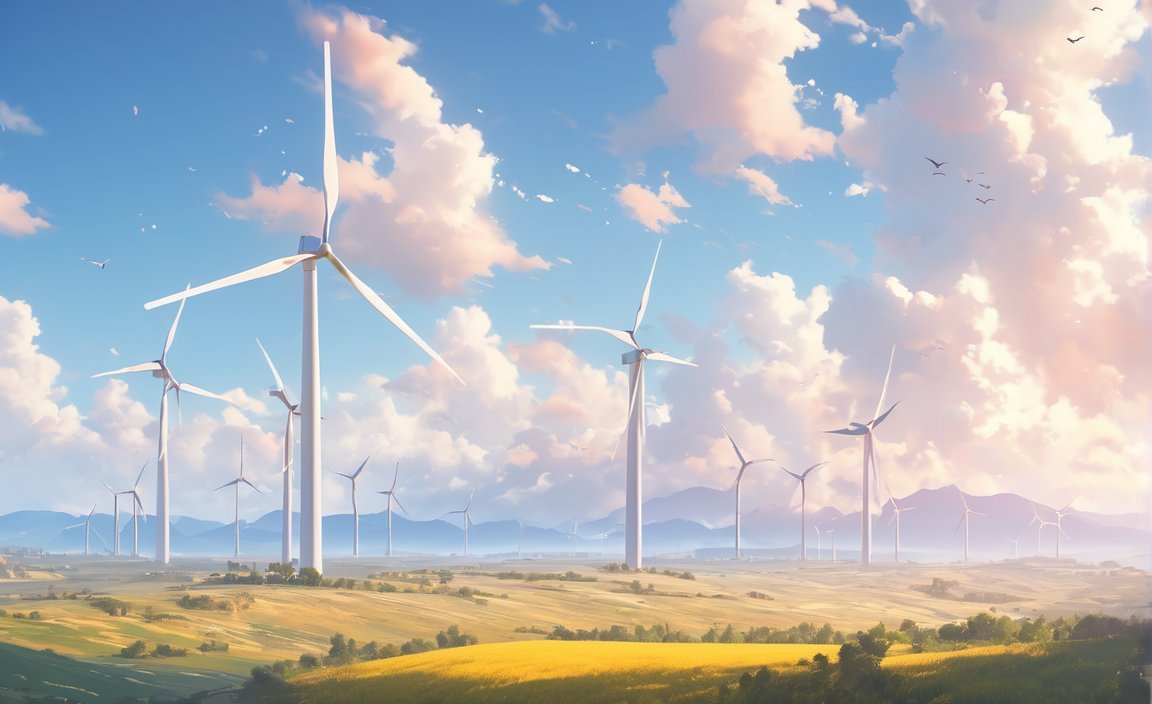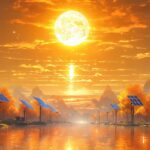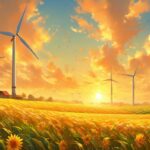Discover the advantages and disadvantages of wind energy conversion systems with our comprehensive analysis. As the world embraces clean and renewable energy sources, wind power has emerged as a frontrunner in the quest for a sustainable future. Understanding the benefits and drawbacks of harnessing wind energy is crucial for informed decision-making in both personal and industrial settings. In this article, we delve into the pros and cons of wind energy systems, shedding light on their technical intricacies, economic implications, and environmental impact. Join us as we navigate through the complexities of wind energy and explore its potential as a key player in our transition to a greener planet.
Key Takeaways:
- Wind energy is one of the fastest-growing energy sources worldwide and offers numerous advantages.
- Offshore wind turbines have the advantage of capturing powerful and reliable winds near coastlines.
- Converters play a crucial role in wind energy conversion and their advancements are essential for a sustainable future.
- Large-scale wind energy conversion systems are not directly compatible with existing power grids, requiring further research and innovation.
- Different applications of wind energy conversion systems may require specific requirements for effective integration.
- These findings provide valuable insights into the advantages, challenges, and future prospects of wind energy.
Advantages and Disadvantages of Wind Energy Conversion Systems

Advantages of Wind Energy Conversion Systems
Wind energy conversion systems offer several advantages that make them a valuable component of a cleaner and greener energy future.
1. Renewable and Clean Energy Source
Wind energy is a renewable and clean source of power. Unlike fossil fuels, wind is an abundant resource that will not deplete over time. By harnessing the power of the wind, we can generate electricity without relying on finite resources or releasing harmful greenhouse gas emissions.
2. Cost-Effective Energy Generation
Wind energy has become increasingly cost-effective over the years. The advancements in technology have made wind turbines more efficient, resulting in reduced production costs. Additionally, the cost of generating electricity from wind is relatively stable compared to fluctuating fossil fuel prices, providing long-term economic benefits.
3. Greenhouse Gas Emission Reduction
Using wind energy for electricity production significantly reduces greenhouse gas emissions. Traditional fossil fuel power plants release large amounts of carbon dioxide, contributing to climate change. By switching to wind energy, we can mitigate the environmental impact and combat global warming.
4. Low Operation and Maintenance Costs
Wind turbines have relatively low operation and maintenance costs compared to other energy generation methods. Once installed, the costs associated with operating and maintaining wind farms are minimal, making wind energy an economically attractive option.
5. Job Creation and Economic Growth
The wind energy industry creates job opportunities and stimulates economic growth in both rural and urban areas. From manufacturing and installation to operation and maintenance, wind farms require a skilled workforce. This contributes to local economic development and enhances the overall energy industry.
Disadvantages of Wind Energy Conversion Systems
While wind energy conversion systems offer numerous benefits, there are also some challenges and disadvantages that need to be considered.
1. Intermittent Nature of Wind
One of the major challenges of wind energy conversion systems is their reliance on wind availability. Wind is an intermittent energy source, meaning that it is not consistently available at all times. This variability in wind speed and direction requires backup power sources or energy storage systems to ensure a continuous electricity supply.
2. Visual and Noise Impact
Wind turbines can have a visual impact and generate noise, which can be considered a disadvantage, especially in areas where the landscape or local communities may be negatively affected. Balancing the need for clean energy with community aesthetics and noise concerns is an important consideration when deploying wind turbines.
3. Wildlife and Environmental Concerns
Another consideration is the potential impact on wildlife and the environment. Wind turbines can disrupt bird migration patterns and pose risks to flying animals. Proper planning and siting of wind farms can help minimize these impacts, but it requires careful assessment and consideration of potential ecological effects.
4. Land and Space Requirements
Wind energy conversion systems, particularly onshore wind farms, require substantial land and space for installation. This can be a challenge in densely populated areas where available land is limited. Offshore wind farms, while addressing this land constraint, present their own challenges such as higher construction and maintenance costs and potential impacts on marine ecosystems.
Conclusion
Wind energy conversion systems offer significant advantages as a clean and renewable energy source. They contribute to reducing greenhouse gas emissions, generating cost-effective electricity, and creating job opportunities. However, the intermittent nature of wind, visual and noise impacts, wildlife concerns, and land requirements are important considerations. By understanding both the advantages and disadvantages, we can strive for responsible wind energy development that maximizes benefits and minimizes potential drawbacks.
Wind energy has its advantages and disadvantages, but understanding them is crucial for sustainable development. Learn more about the advantages and disadvantages of wind energy and how it can impact the environment by clicking here.
When it comes to agriculture, wind power can offer unique benefits and challenges. Discover the advantages and disadvantages of wind power in agriculture and explore its potential for enhancing farming practices by visiting this link.
Disadvantages of Wind Energy Conversion Systems
Wind energy conversion systems, also known as wind turbines, have gained popularity as a sustainable source of renewable power generation. While they offer numerous benefits, it is important to consider the disadvantages as well. In this article, we will explore the drawbacks of wind energy conversion systems and their implications in the renewable energy sector.
Intermittency
One of the main disadvantages of wind energy conversion systems is their intermittent nature. Wind speeds are variable, which means that wind turbines may not operate optimally if the wind is too weak or too strong. This variability in wind speed results in inconsistent energy output, impacting the reliability of wind power as a consistent energy source. Efficient energy storage systems are necessary to ensure a reliable power supply when wind speeds are not optimal. [^1^]
Visual and Noise Impact
Another drawback of wind energy conversion systems is their visual and noise impact on surrounding areas. Wind farms, which consist of multiple wind turbines, can alter the visual landscape and create noise disturbances for nearby residents. Some individuals find wind turbines to be aesthetically unpleasing, which can impact the overall perception of wind energy projects. Noise generated by the operation of wind turbines can also be a concern for communities located close to wind farms. [^2^]
It is worth noting that the visual and noise impacts of wind energy conversion systems can vary depending on factors such as turbine design, distance from populated areas, and the local landscape. Mitigation measures, such as proper planning and site selection, can help minimize these impacts.
Key Takeaways:

- Wind energy conversion systems have drawbacks that need to be considered alongside their advantages.
- The intermittent nature of wind energy due to variable wind speeds requires efficient energy storage systems for reliable power supply.
- Wind farms can have visual and noise impacts on surrounding areas, which may affect the acceptance of wind energy projects by local communities.
[^1^]: The Top Pros And Cons of Wind Energy | EnergySage
[^2^]: Web Enotes
Economic Implications of Wind Energy Conversion Systems
Advantages of Wind Energy
- Renewable and Clean: Wind energy is a renewable resource that provides a long-lasting and uninterrupted supply of electricity. It also contributes to a cleaner environment by producing no greenhouse gas emissions or air pollutants during operation.
Source: Wind Solar Alliance
Cost-Effective: Wind power has become one of the most cost-effective sources of new electricity. Land-based, utility-scale wind turbines offer competitive pricing, making wind energy an economically viable option for power generation.
Source: Department of Energy
Job Creation: The wind energy industry provides substantial employment opportunities. Over 120,000 people are currently employed in the wind power sector in the United States alone, contributing to job growth and economic stability.
Source: Department of Energy
Local Community Benefits: Wind energy projects bring economic benefits to local communities. These projects are estimated to deliver approximately $1.9 billion in economic contributions to communities across the country, stimulating local economies and providing financial support.
- Source: Department of Energy
Disadvantages of Wind Energy
- Intermittency: Wind energy is variable and intermittent due to the reliance on wind speed. This means that wind turbines may not operate optimally if wind speeds are too low or too high, resulting in decreased energy output. To ensure a reliable power supply, efficient energy storage systems are necessary.
Visual and Noise Impact: Wind farms, consisting of multiple wind turbines, can have visual and noise impacts on surrounding areas. Some individuals may perceive wind turbines as aesthetically unpleasing, and there have been reports of noise disturbances caused by the turbine operation.
- Source: Web Enotes
Key Takeaways:
- Wind energy offers a renewable and clean source of electricity production, minimizing environmental impact and reducing greenhouse gas emissions.
- Wind power is cost-effective, making it an economically viable option for new electricity generation.
- The wind energy industry creates employment opportunities, contributing to job growth and economic stability.
- Wind energy projects bring economic benefits to local communities, stimulating local economies and providing financial support.
- Intermittency and visual/noise impacts are the disadvantages associated with wind energy, highlighting the need for energy storage systems and consideration for surrounding areas.
Environmental impacts of wind energy conversion systems
Wind energy conversion systems have gained significant attention as a sustainable and clean source of electricity. However, it is important to consider the environmental impacts associated with these systems. This article will explore the advantages and disadvantages of wind energy from an environmental perspective.
Advantages of Wind Energy
Renewable and Clean
- Wind energy is a renewable resource that relies on the natural flow of wind, ensuring a sustainable and uninterrupted supply of electricity. It doesn’t deplete natural resources.
(Source: Wind Solar Alliance)
Reduced Greenhouse Gas Emissions
- Wind energy conversion systems produce electricity without emitting greenhouse gases, contributing to the global effort to combat climate change.
Water Conservation
- Wind energy plays a crucial role in water conservation. By shifting reliance from water-intensive power generation methods like fossil fuel plants, wind energy has the potential to save billions of gallons of water.
(Source: Department of Energy)
Sustainable Job Opportunities
- The wind energy sector creates significant job opportunities, supporting economic growth and stability in local communities.
(Source: Department of Energy)
Disadvantages of Wind Energy
Visual and Noise Impact
- Wind farms, consisting of multiple turbines, can have a visual impact on the surrounding landscape. Some people may find them aesthetically unpleasing.
- Additionally, the noise generated by wind turbines during operation can be a concern for nearby residents.
(Source: Web Enotes)
Wildlife Concerns
- Wind energy conversion systems can have unforeseen environmental impacts on wildlife. These systems have been associated with bird and bat fatalities, requiring proper siting and wildlife-friendly technologies.
(Source: EnergySage)
Land Use and Landscape Modification
- The development of wind power involves changes in land use and modifications to the landscape. This may have consequences for local ecosystems and biodiversity.
(Source: ScienceDirect)
Key Takeaways:
- Wind energy is a renewable and clean source of electricity, contributing to the reduction of greenhouse gas emissions.
- Wind energy conversion systems have the potential to save significant amounts of water.
- Wind energy provides job opportunities and supports economic growth.
- Visual and noise impacts are considerations associated with wind farms.
- Proper siting and wildlife-friendly technologies are necessary to mitigate the environmental impact on wildlife.
- Land use changes and landscape modifications are possible consequences of wind power development.
Note: The advantages and disadvantages mentioned here focus specifically on the environmental impacts of wind energy conversion systems.
Sources:
– Wind Solar Alliance
– Web Enotes
FAQ
Q1: What are the advantages of wind energy conversion systems?
A1: Wind energy conversion systems have several advantages, including being a renewable and clean energy source, cost-effectiveness, job creation, and providing economic benefits to local communities.
Q2: How does wind energy compare to fossil fuel-based sources in terms of environmental impact?
A2: Wind energy is environmentally friendly and produces no greenhouse gas emissions or air pollutants during operation, making it a cleaner alternative to fossil fuel-based sources.
Q3: What are the challenges associated with wind energy conversion systems?
A3: The intermittent nature of wind energy due to variable wind speeds and the visual and noise impacts of wind farms are some of the challenges associated with wind energy conversion systems.
Q4: How does wind energy contribute to job creation and economic growth?
A4: The wind energy industry provides substantial employment opportunities, contributing to job growth and economic stability. Wind energy projects also deliver economic contributions to local communities.
Q5: Can wind energy fully replace conventional power systems?
A5: While wind energy has significant advantages, large-scale wind energy conversion systems are not directly compatible with the characteristics of wind turbines and require further research and innovation to integrate effectively into existing power grids.
- Unlock Elemental 2 Secrets: Actionable Insights Now - April 2, 2025
- Lot’s Wife’s Name: Unveiling the Mystery of Sodom’s Fall - April 2, 2025
- Photocell Sensors: A Complete Guide for Selection and Implementation - April 2, 2025
















